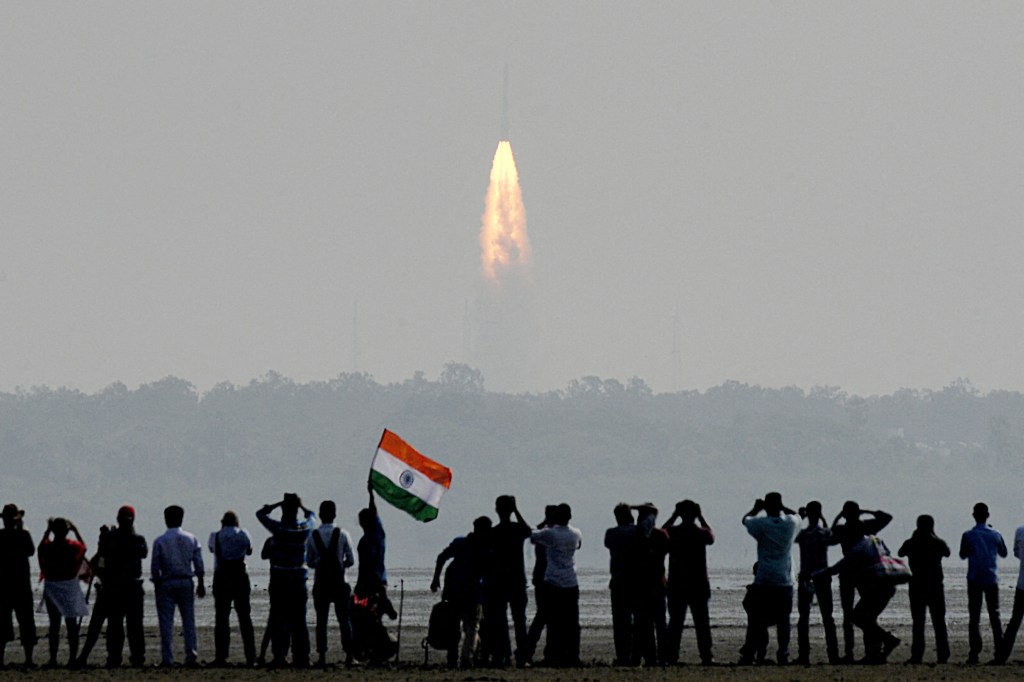India is facing a water crisis—in more ways than one.
Parts of the country are facing an acute drought, with states running out of water supply altogether. But other parts are encountering floods, which are resulting in harrowing death tolls and displacement.
Videos by VICE
Punjab, Haryana, Rajasthan, Uttar Pradesh, Guajarat, Madhya Pradesh and Jammu and Kashmir are amongst the nine states and territories which are experiencing “extremely high” water stress. A new global report by the World Resources Institute (WRI)—a US-based think tank working on sustainability—has found that these states are in particular danger of exhausting water supplies. Essentially, ground and surface water are becoming scarce.
According to the BBC, the report’s authors found that more than 80 percent of the available ground water in India has been withdrawn. About 70 percent of this is for agriculture.
Farmers in Haryana told the BBC that finding water underground is a monumental challenge. “Now we have to dig up to 153 metres to access groundwater,” said Narendar Singh, a young farmer, who had to dig up to 45.7 metres underground ten years ago, before they first found water “Soon there won’t be even drinking water, forget water for agriculture. I am so worried.”
Chennai, India’s sixth-largest city, ran out of water entirely in July 2019. The WRI report stated it is one of the world’s worst recent urban water crises.

The city, home to five million people, reportedly gets most of its water from monsoon showers. But Chennai faced months of little rainfall prior to the widespread drought. Now, four of the city’s largest reservoirs have run dry. The water that is available is allegedly causing illnesses. The New York Times reported that the crisis has resulted in unhygienic practices, such as some people not being able to take daily showers in their homes and public toilets shutting down. Others have resorted to “water-saving hacks”: some residents claim they catch dripping water from air conditioners, and have resorted to hand-washing everything with minimal, measured amounts of water. Many children haven’t been able to go to school or college, residents told the BBC.
Another report, by Verisk Maplecroft, a London-based risk analytics firm, stated that this “could be the new normal” in Chennai.

21 major cities in the country are expected to run out of groundwater by 2020, according to Indian, government-run think tank NITI Aayog. India’s population is already outgrowing its water supply, and according to CNN, this is set to get worse. Hundreds of millions of lives could be in danger unless water supplies are somehow restored.
On the other hand, the ongoing monsoon season and flooding are causing other problems entirely. Reports fear that over 200 have been killed due to the floods, across India.
In Kerala, during a four-day period from August 9, over 2,90,000 people were displaced because of the rains. Reportedly, 91 people were killed, 32 injured, and another 58 are missing. This means over half of all deaths related to the monsoons occurred in Kerala. Maharashtra has also been hit with torrential rains, with floods blocking roads and electricity supplies being cut off.
Then there are places like Balangir, Bhubaneswar. At the beginning of August, the district was facing a drought-like situation. But just days later, rain swept through the homes and streets. The village of Madhiapali in Balangir is under 20 feet of water, according to a district official, and several localities have been swept away.
All this amounts to a harsh new reality: climate change is on its way to make parts of India completely unlivable. The conflicting issues of droughts and floods make for uncertainty and problematic living situations. Climate change is only amplified when it comes to poverty-stricken areas and families, with income inequality disproportionately affecting the poor. Those of lower incomes are much more vulnerable to the impact of natural disasters, as outlined by a report on Climate Trends. This is particularly evident for farmers and those residing in rural parts of India.




